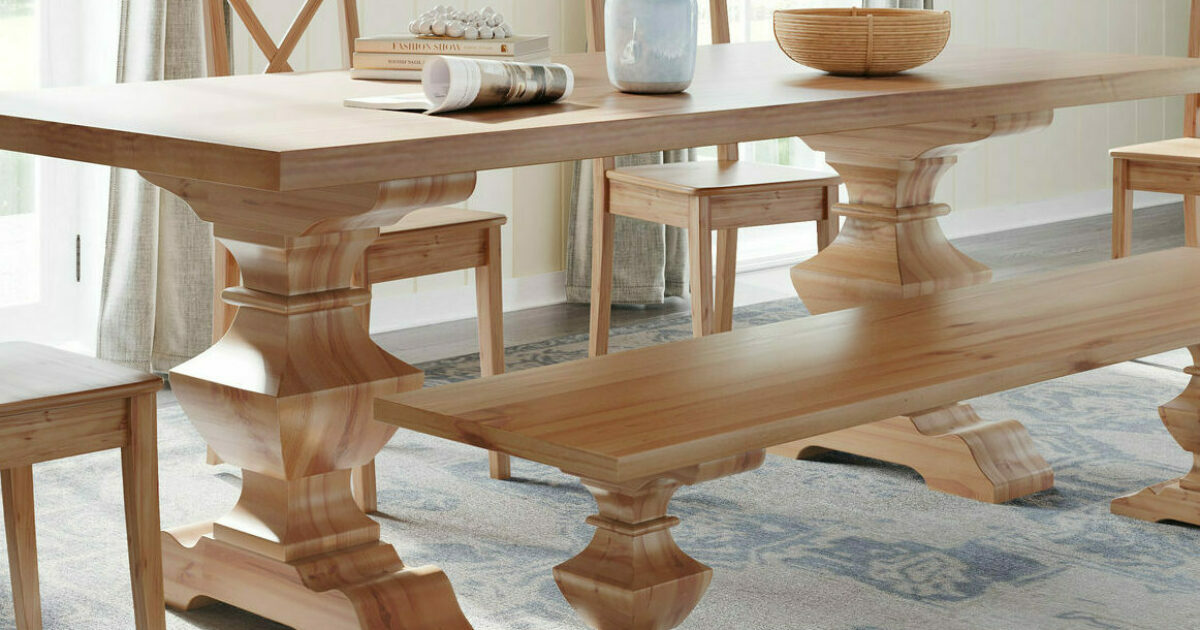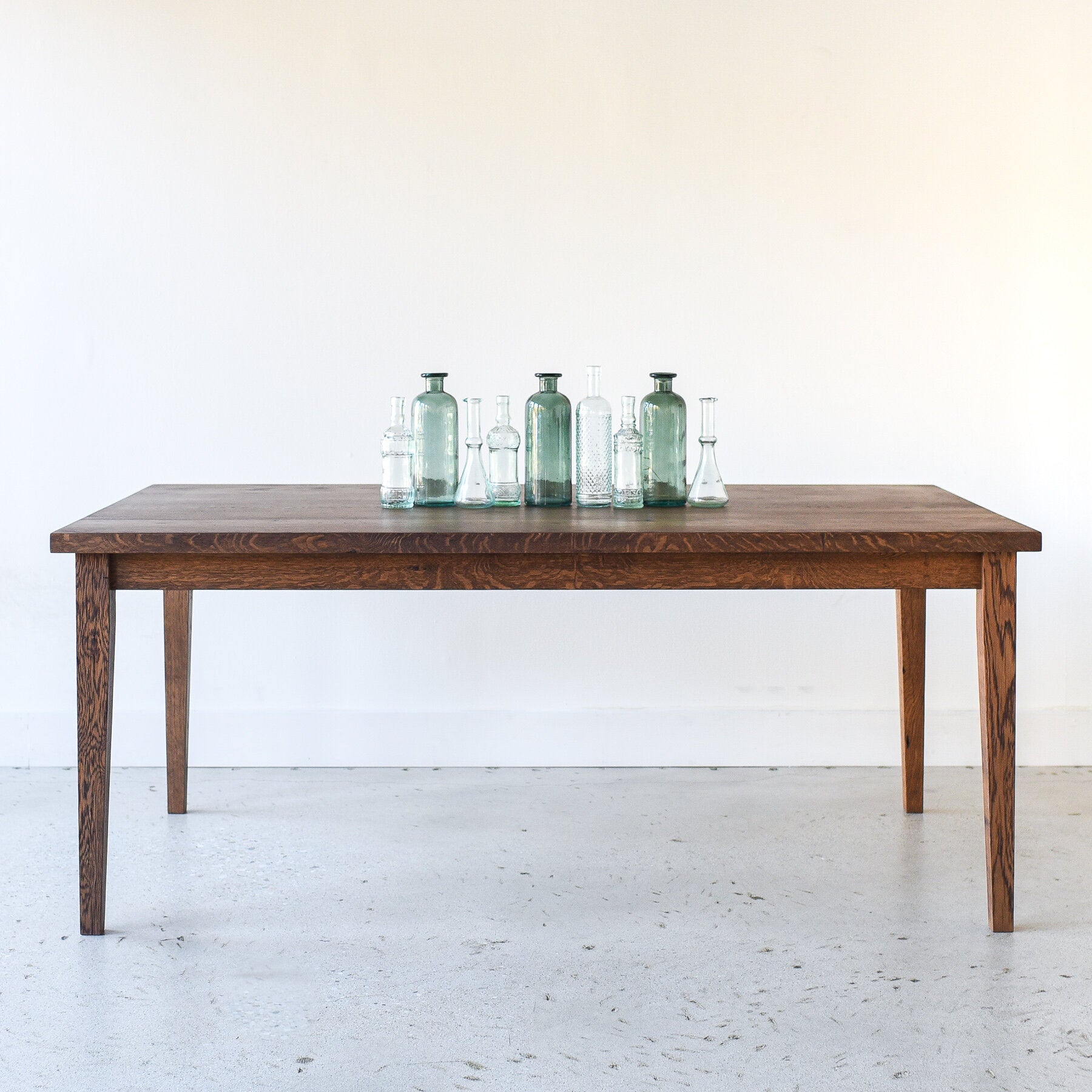Check Out Versatile Styles for Custom-made Dining Table Legs Wood Solutions
Check Out Versatile Styles for Custom-made Dining Table Legs Wood Solutions
Blog Article
Exploring the Different Sorts Of Eating Table Legs Wood for Your Dining Area
The choice of table legs timber can greatly impact both the useful and aesthetic qualities of your dining room. Solid timber options, such as oak and walnut, supply a classic look with unparalleled toughness, while engineered timber options use cutting-edge styles that imitate the splendor of all-natural grains. Additionally, the expanding trend of recovered timber introduces a lasting element that charms to environmentally mindful customers. As we discover these various choices, it comes to be necessary to consider not only the aesthetic appeal however additionally the practical ramifications of each product selection. What factors should assist your choice?
Solid Wood Options

Moreover, solid wood is renowned for its toughness and longevity. Unlike engineered products, strong wood is less prone to bending and damages with time when properly preserved. This makes it an ideal option for families or those that regularly host gatherings. Each item of strong timber is one-of-a-kind, showcasing specific qualities that include to the charm and character of the eating table.
In addition, strong wood can be finished in numerous means, ranging from natural oils to stained coatings, permitting homeowners to individualize their furnishings to match their decoration. In summary, selecting strong timber for eating table legs not only ensures structural honesty but also enhances the aesthetic charm of the eating area, making it a worthwhile financial investment for any type of home.
Engineered Wood Alternatives

Plywood, built from numerous layers of timber veneer, is stable and particularly solid, making it an exceptional choice for eating table legs. Its layered make-up enables it to endure adjustments in humidity and temperature level better than traditional strong wood. MDF, on the other hand, offers a smooth surface area for paint or veneering, making it possible for designers to attain a polished look while maintaining structural honesty.
Particleboard, typically made use of in economical choices, gives respectable toughness and is lightweight, making it simpler to handle. Nevertheless, it might not be as long lasting as plywood or MDF. When selecting crafted timber options, it is vital to take into consideration the designated usage and wanted visual. These products not only improve the capability of eating spaces but likewise permit for better design versatility, guaranteeing that traditional and contemporary styles can exist together harmoniously.
Reclaimed Wood Features
Reclaimed wood uses an one-of-a-kind mix of sustainability and personality, making it a significantly popular selection for eating table legs. Sourced from old barns, manufacturing facilities, and various other frameworks, recovered wood personifies a background that new materials simply can not replicate. Each piece brings its very own tale, noted by unique imperfections, knots, and differing grain patterns, which add to a table's one-of-a-kind aesthetic appeal.
In addition to its aesthetic appeal, recovered wood is an eco-friendly alternative. By repurposing formerly made use of products, it lowers the demand for new lumber, hence helping to preserve forests and minimize waste. This aligns with an expanding customer preference for lasting methods in furnishings.
Additionally, reclaimed wood is often a lot more resilient than newly collected wood due to its age. The all-natural drying out process that redeemed wood undertakes cause a denser and more powerful material, making it much less vulnerable to bending and splitting. This improves the long life of dining tables, permitting them to endure the roughness of day-to-day use.
Softwood vs. Wood
When picking eating table legs, recognizing the distinctions in between softwood and hardwood is important for accomplishing both useful and aesthetic goals. They usually display an even more rustic look, making them ideal for country-style or casual dining spaces.
On the other hand, hardwoods, sourced from deciduous trees like cherry, oak, and maple, are renowned for their density, strength, and sturdiness. The intricate grain patterns and rich shades of hardwoods offer a classic and innovative allure, making them suitable for pop over to this web-site formal dining setups. While woods tend to be more expensive and much heavier, their strength against wear and tear frequently justifies the investment.
Ultimately, the selection in between softwood and hardwood for eating table legs need to line up with your layout vision, usage demands, and budget plan, guaranteeing that your dining space mirrors your individual style while remaining useful with time.

Therapies and coatings
The aesthetic allure and long life of eating table legs can be considerably improved with different coatings and therapies. These processes not only shield the timber from damages however additionally boost its appearance, permitting it to match varied interior styles.
One usual treatment is tarnishing, which passes through the timber and improves its all-natural grain while adding color. Discolorations provide a rich, classy appearance, enabling property owners to match their furniture with existing style. Alternatively, clear coatings such as polyurethane or varnish develop a protective layer without modifying the timber's initial shade, ensuring durability versus damage.
Furthermore, natural oils, like tung or linseed oil, nourish the wood and supply a refined sheen, all while being environment-friendly. These oils allow the surface area to breathe, stopping wetness buildup and possible bending.
For those looking for a rustic charm, weathered i was reading this or troubled finishes can be used to create an aged appearance, adding personality to the piece. Inevitably, the option of finishes and treatments depends upon personal preference, wanted looks, and the specific timber type, making it necessary to think about these factors when choosing dining table legs for your area.
Verdict
To conclude, the option of eating table leg products substantially affects both the Home Page practical and aesthetic elements of an eating space. Solid woods, crafted options, and redeemed options each offer unique benefits, catering to various preferences and needs. Recognizing the differences between softwoods and hardwoods, together with appropriate coatings and treatments, enables informed decision-making. Eventually, the selection of wood type need to align with preferred style, resilience, and ecological factors to consider, improving the total dining experience.
The option of dining table legs timber can profoundly affect both the visual and practical high qualities of your dining area - Dining Table Legs Wood. Solid wood options, such as oak and walnut, offer a traditional look with unmatched resilience, while engineered wood alternatives supply cutting-edge designs that resemble the splendor of natural grains. Solid timber supplies an ageless quality that can elevate the total layout of a dining area. Each piece of strong wood is unique, showcasing specific qualities that include to the appeal and character of the eating table
In addition, recovered timber is commonly a lot more resilient than newly harvested timber due to its age.
Report this page